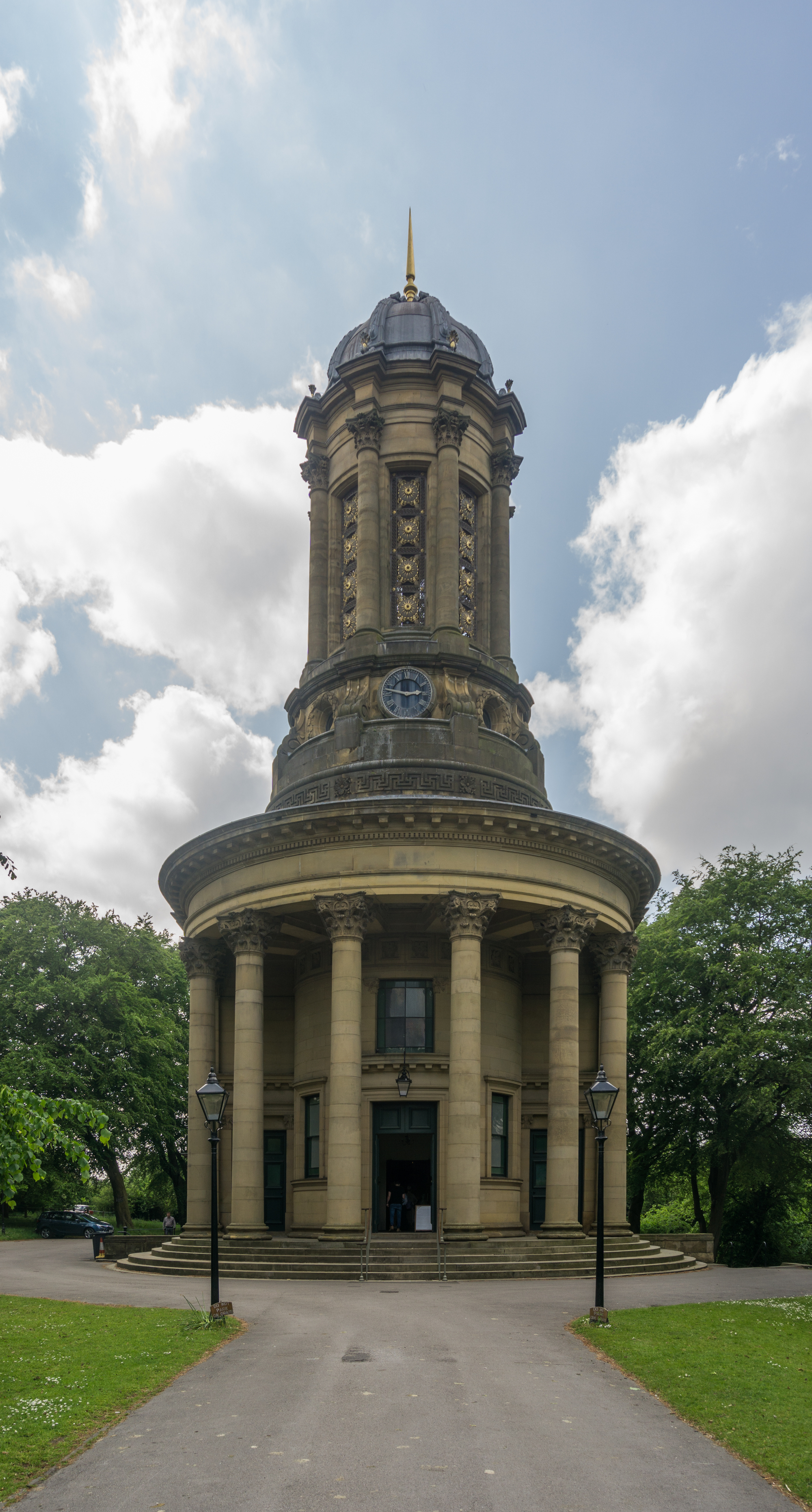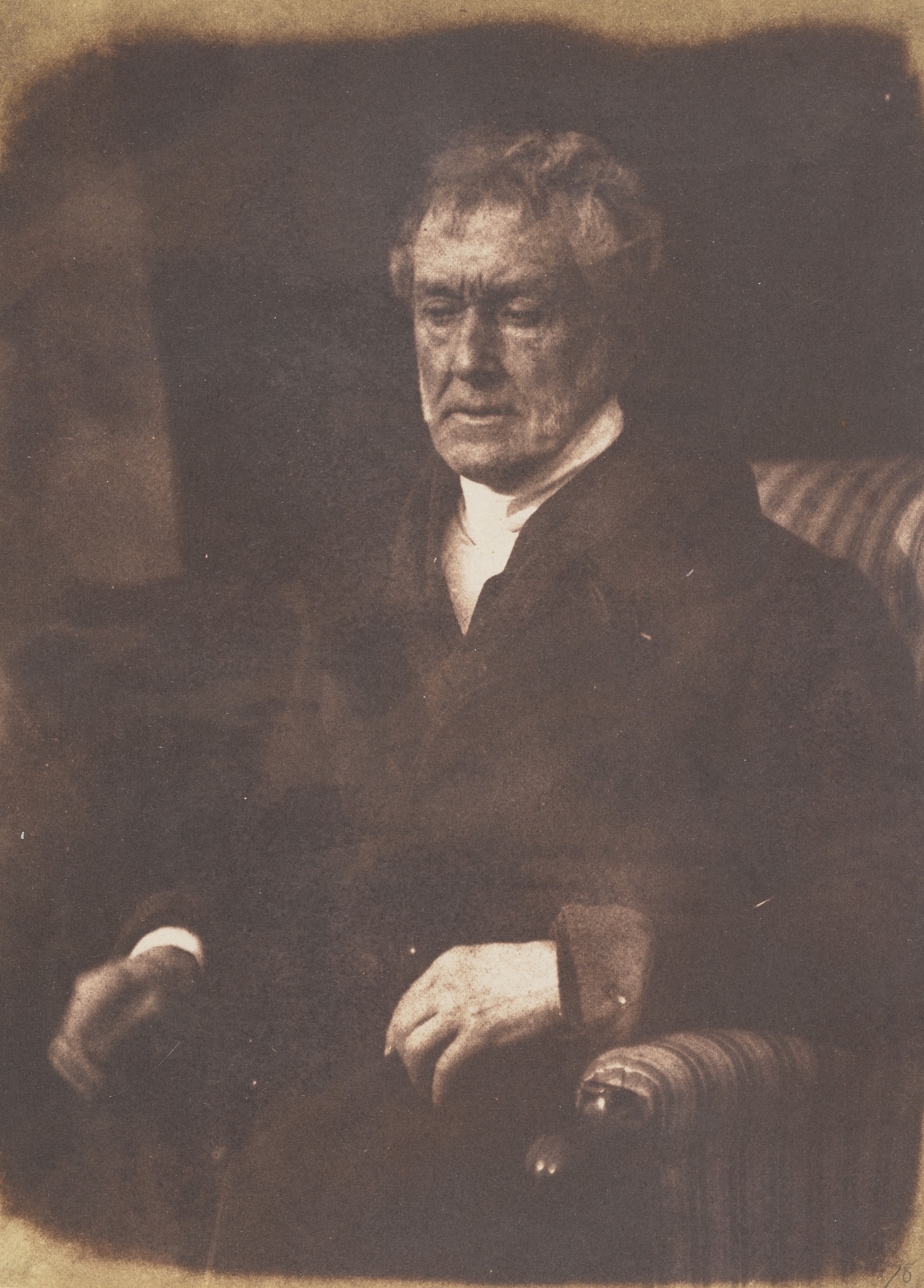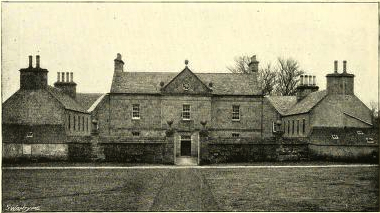|
Thomas M'Crie The Younger
Thomas M'Crie (earlier spellings include McCree and Maccrie) (7 November 1797–9 May 1875) was a Presbyterian minister and church historian. He was a Scottish Secession minister who joined the Free Church of Scotland and served as the Moderator of the General Assembly to that church 1856/57. Early life and ministry He was born at 5 Buccleuch Street in Edinburgh, on 7 November 1797, the eldest son of Thomas McCrie, by his first wife. He was educated at the High School in Edinburgh then studied divinity at the University of Edinburgh. He then transferred to the Theological Hall, run by the Secessionist Church. He received his theological training partly under Professor Bruce, Whitburn, his father, and Robert Chalmers, Haddington (his future father in law). Fellow students included John Duncan, and Robert Shaw who wrote a commentary on the Westminster Confession of Faith. He was licensed on 15 August 1820. He was called to Crieff on 14 February 1821 being ordained as ... [...More Info...] [...Related Items...] OR: [Wikipedia] [Google] [Baidu] |
Edinburgh
Edinburgh ( ; gd, Dùn Èideann ) is the capital city of Scotland and one of its 32 Council areas of Scotland, council areas. Historically part of the county of Midlothian (interchangeably Edinburghshire before 1921), it is located in Lothian on the southern shore of the Firth of Forth. Edinburgh is Scotland's List of towns and cities in Scotland by population, second-most populous city, after Glasgow, and the List of cities in the United Kingdom, seventh-most populous city in the United Kingdom. Recognised as the capital of Scotland since at least the 15th century, Edinburgh is the seat of the Scottish Government, the Scottish Parliament and the Courts of Scotland, highest courts in Scotland. The city's Holyrood Palace, Palace of Holyroodhouse is the official residence of the Monarchy of the United Kingdom, British monarchy in Scotland. The city has long been a centre of education, particularly in the fields of medicine, Scots law, Scottish law, literature, philosophy, the sc ... [...More Info...] [...Related Items...] OR: [Wikipedia] [Google] [Baidu] |
Archibald Bruce (writer)
Archibald Bruce (1746–1816), was a Scottish theological writer. Life Bruce was born at Broomhall, Stirlingshire, and, after studying at the University of Glasgow, was ordained, in 1768, minister of the Associate (Anti-Burgher) congregation of Whitburn. In 1786 he was appointed professor of divinity by the General Associate Synod, and continued to hold that office till 1806. Being dissatisfied with the action of his synod, he left it and formed, along with Thomas M'Crie the Elder and two others, the 'Auld Licht' Anti-Burgher ' Constitutional Associate Presbytery'. This led to a sentence of deposition being passed on him by the former body. He died 28 February 1816. Writings Bruce's major writings were: * ''The Kirkiad, or the Golden Age of the Church of Scotland', a satirical poem, 1774. * ''Free Thoughts on the Toleration of Popery'', 1780. * ''Annus Secularis'', the centenary of the revolution 1788, a long dissertation on religious festivals. * ''Queries'', on the comme ... [...More Info...] [...Related Items...] OR: [Wikipedia] [Google] [Baidu] |
East Lothian
East Lothian (; sco, East Lowden; gd, Lodainn an Ear) is one of the 32 council areas of Scotland, as well as a historic county, registration county and lieutenancy area. The county was called Haddingtonshire until 1921. In 1975, the historic county was incorporated for local government purposes into Lothian Region as East Lothian District, with some slight alterations of its boundaries. The Local Government etc. (Scotland) Act 1994 later created East Lothian as one of 32 modern council areas. East Lothian lies south of the Firth of Forth in the eastern central Lowlands of Scotland. It borders Edinburgh to the west, Midlothian to the south-west and the Scottish Borders to the south. Its administrative centre and former county town is Haddington while the largest town is Musselburgh. Haddingtonshire has ancient origins and is named in a charter of 1139 as ''Hadintunschira'' and in another of 1141 as ''Hadintunshire''. Three of the county's towns were designated as roy ... [...More Info...] [...Related Items...] OR: [Wikipedia] [Google] [Baidu] |
Gullane
Gullane ( or ) is a town on the southern shore of the Firth of Forth in East Lothian on the east coast of Scotland. There has been a church in the village since the ninth century. The ruins of the Old Church of St. Andrew built in the twelfth century can still be seen at the western entrance to the village; the church was abandoned after a series of sandstorms made it unusable, and Dirleton Parish Church took its place. Gullane Bents, the village's award-winning beach, is backed by large sand dunes that in recent years have become rather overgrown by invasive shrubs like sea-buckthorn. Gullane is part of the John Muir Way, a long-distance footpath along the coast between Musselburgh and Dunglass. The local population includes a higher than average percentage of elderly people, but also attracts young families and commuters for Edinburgh. Urbanisation has led to some recent housing developments being approved on greenbelt land around the village, and Gullane is gaining popul ... [...More Info...] [...Related Items...] OR: [Wikipedia] [Google] [Baidu] |
United Reformed Church
The United Reformed Church (URC) is a Protestant Christian church in the United Kingdom. As of 2022 it has approximately 40,000 members in 1,284 congregations with 334 stipendiary ministers. Origins and history The United Reformed Church resulted from the 1972 union of the Presbyterian Church of England and the Congregational Church in England and Wales. In introducing the United Reformed Church Bill in the House of Commons on 21 June 1972, Alexander Lyon called it "one of the most historic measures in the history of the Christian churches in this country". About a quarter of English Congregational churches chose not to join the new denomination; in England, there are three main groups of continuing Congregationalists: the Congregational Federation, the Evangelical Fellowship of Congregational Churches and the Fellowship of Independent Evangelical Churches. The URC subsequently united with the Re-formed Association of Churches of Christ in 1981 and the Congregational Union of S ... [...More Info...] [...Related Items...] OR: [Wikipedia] [Google] [Baidu] |
George Square, Edinburgh
George Square ( gd, Ceàrnag Sheòrais) is a city square in Edinburgh, Scotland. It is in the south of the city centre, adjacent to The Meadows (park), the Meadows. It was laid out in 1766 outside the overcrowded Old Town, Edinburgh, Old Town, and was a popular residential area for Edinburgh's better-off citizens. In the 1960s, much of the square was redeveloped by the University of Edinburgh, although the Cockburn Association and the Architectural Heritage Society of Scotland, Georgian Group of Edinburgh protested. Most but not all buildings on the square now belong to the university (among the exceptions being the Dominican Order, Dominican St Albert's Catholic Chaplaincy, Edinburgh, priory of St Albert the Great). Principal buildings include the Gordon Aikman Lecture Theatre, Edinburgh University Library, 40 George Square and Appleton Tower. Georgian square The square was laid out in 1766 by the builder James Brown, and comprised modest, typically Georgian architecture, Geo ... [...More Info...] [...Related Items...] OR: [Wikipedia] [Google] [Baidu] |
Angus Makellar
Angus Makellar (1780–1859) was a Scottish minister of the Church of Scotland who served as Moderator of the General Assembly of the Church of Scotland in 1840. Leaving in the Disruption of 1843 he also served as Moderator of the General Assembly of the Free Church of Scotland in 1852. Early life and education Makellar was born in Kilmichael on 22 June 1780. He was the son of Duncan Makellar, a farmer in Argyleshire. According to Beith he retained an Argylshire accent throughout his life. He studied divinity at Glasgow University and was licensed to preach in 1810. Pre-disruption employment He was ordained as a minister on 30 April 1812 and began as minister of Carmunnock. From 29 June 1814 he was minister of Pencaitland in East Lothian east of Edinburgh. He was succeeded in Carmummock by the Patrick Clason, and after being translated to Pencaitland, in Haddingtonshire, was married to Miss Helen Stirling. He was a awarded a doctorate in divinity from Glasgow University in 1 ... [...More Info...] [...Related Items...] OR: [Wikipedia] [Google] [Baidu] |
George Paxton (minister)
George Paxton (2 April 1762 – 9 April 1837) was a Scottish secession minister and poet. He was the professor of divinity of the 'New Licht' Anti-Burgher General Associate Synod. Life Background Paxton was born on 2 April 1762 at Dalgourie, on the edge of Bolton, East Lothian. He was the eldest son of Jean Milne and William Paxton a joiner and carpenter. In early childhood he moved with his family to Melrose, then again to Makerstoun, near Kelso. Here a local laird, Sir Hay McDougal, a colonel in the Scots Greys, took Paxton under his wing. Education Sir Hay sent George to Kelso to learn Latin and Greek. After an unfinished apprenticeship as a carpenter, he left his home town to attend the University of Edinburgh but left in 1784 without a degree. He continued his education with the private tutor Reverend William Moncrieff in Alloa. Here he became "a firm seceder". Ordination and secession In March 1788 George received his licence to preach and was ordained as minister of ... [...More Info...] [...Related Items...] OR: [Wikipedia] [Google] [Baidu] |
Life Church, Edinburgh
Life Church is a congregation of the Apostolic Church located in the Southside, Edinburgh, Scotland. The church's building was constructed for a congregation of Auld Licht Anti-Burghers in 1813. The building's first congregation was founded in 1806, when Thomas M'Crie the Elder, a leading Auld-Licht or conservative withdrew from the Anti-Burgher Secession Church. After M'Crie's death in 1835, the congregation called as its minister Thomas M'Crie the Younger. The Auld Licht Ant-Burghers joined other factions to form the United Original Secession Church at a meeting in the building in 1842. In 1852, the United Original Secession joined the Free Church and six years later adopted the name McCrie Free Church. In 1886, they united with Roxburgh Free Church to form McCrie-Roxburgh Free Church. In 1900, the congregation joined the United Free Church and, in 1920, the congregation united with Newington United Free Church. The united congregation retained the McCrie-Roxburgh building ... [...More Info...] [...Related Items...] OR: [Wikipedia] [Google] [Baidu] |
Roxburghshire
Roxburghshire or the County of Roxburgh ( gd, Siorrachd Rosbroig) is a historic county and registration county in the Southern Uplands of Scotland. It borders Dumfriesshire to the west, Selkirkshire and Midlothian to the north-west, and Berwickshire to the north. To the south-west it borders Cumberland and to the south-east Northumberland, both in England. It was named after the Royal Burgh of Roxburgh, a town which declined markedly in the 15th century and is no longer in existence. Latterly, the county town of Roxburghshire was Jedburgh. The county has much the same area as Teviotdale, the basin drained by the River Teviot and tributaries, together with the adjacent stretch of the Tweed into which it flows. The term is often treated as synonymous with Roxburghshire, but may omit Liddesdale as Liddel Water drains to the west coast.Ordnance Gazetteer of Scotland, by, Francis Groome, publ. 2nd edition 1896. Article on Roxburghshire History The county appears to have orig ... [...More Info...] [...Related Items...] OR: [Wikipedia] [Google] [Baidu] |
Aberdeenshire
Aberdeenshire ( sco, Aiberdeenshire; gd, Siorrachd Obar Dheathain) is one of the 32 Subdivisions of Scotland#council areas of Scotland, council areas of Scotland. It takes its name from the County of Aberdeen which has substantially different boundaries. The Aberdeenshire Council area includes all of the area of the Counties of Scotland, historic counties of Aberdeenshire and Kincardineshire (except the area making up the City of Aberdeen), as well as part of Banffshire. The county boundaries are officially used for a few purposes, namely land registration and Lieutenancy areas of Scotland, lieutenancy. Aberdeenshire Council is headquartered at Woodhill House, in Aberdeen, making it the only Scottish council whose headquarters are located outside its jurisdiction. Aberdeen itself forms a different council area (Aberdeen City). Aberdeenshire borders onto Angus, Scotland, Angus and Perth and Kinross to the south, Highland (council area), Highland and Moray to the west and Aber ... [...More Info...] [...Related Items...] OR: [Wikipedia] [Google] [Baidu] |
Clola
Clola is a hamlet in Buchan, Aberdeenshire, Scotland. Clola is situated on the A952 road. There is considerable evidence of local habitation by early man in the vicinity of Clola. Some of these nearby human traces are evident in Catto Long Barrow, a massive stone structure now surrounded by agricultural fields. Geography and architecture The scattered residential and farming community of Clola, about three miles north of Ardallie, is centred on Clola crossroads on the A952 some 2.5 miles south of Mintlaw. The neighbourhood extends to a radius of a little over a mile around the former Church. 18th century spellings are Clolloch and Clolah, which probably came from the Gaelic clach or clachach meaning stony place. Church The picturesque church building stands to the east of the crossroads. It is now a dwelling house its exterior form has happily been retained, bearing clear witness to its original function. The first church at Clola was a simple heather thatched stone and clay st ... [...More Info...] [...Related Items...] OR: [Wikipedia] [Google] [Baidu] |










